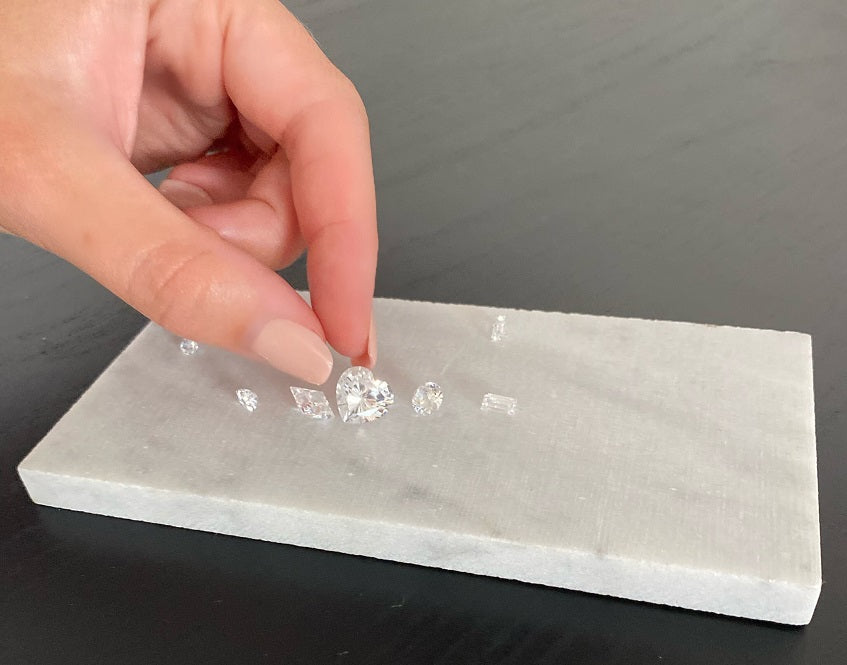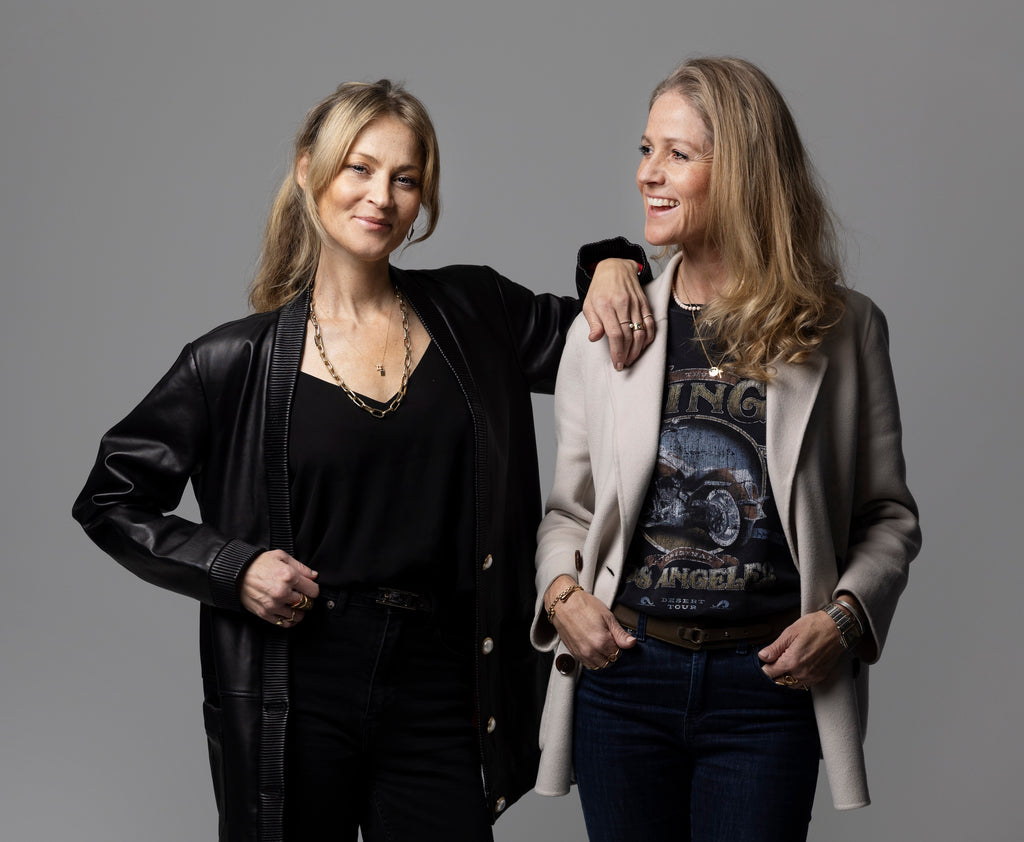< Back to diamond buying guide
Diamond Colour
Diamond Colour is one of the 4 Cs of diamond quality grading (Alongside Cut, Clarity, and Carat). Diamond Colour is a significant marker in determining a diamond’s beauty, value and price of this precious gemstone. This guide will explain how Diamond Colour is evaluated.


What does Diamond Colour mean?
'Diamond Colour'? But aren't natural diamonds colourless? The answer is both yes and no! Yes, diamonds are bright and colourless stones. But some diamonds have colour and they are called fancy-coloured diamonds. Both these types can be natural-mined or lab-grown.
Diamond colour valuation
In diamonds, rarity equals value. Diamond Colour is evaluated in two groups: the normal colour range and the fancy colour range. In the normal colour group, clear and colourless diamonds are considered rare and more valuable. In the fancy-coloured group, vivid and unusual-coloured diamonds are rare and valuable. In both groups, a higher colour grade diamond gets a higher price.
Diamond fluorescence affects its colour grade
Some diamonds show fluorescence after UV exposure which is visible to the naked eye. It is seen as a glow in any colour including blue, yellow, or white. Even high-quality diamonds with Strong or Very Strong fluorescence can appear quite cloudy, milky or hazy. Fluorescence will downgrade a diamond’s value and price. For this reason, today diamonds are graded for fluorescence too apart from the 4 Cs.
Colourless diamonds
In the normal colour range, the rarest diamonds are colourless. For this reason, the diamond colour evaluation of gem-quality colourless diamonds is based on a clear absence of colour rather than the presence of colour! The diamond colour chart on the Gemological Institute of America (GIA) website aptly defines diamond colour as "Diamond colour is all about what you can’t see".
The more pronounced the absence of any colour, the more valuable the colourless diamond is.

Understanding the Diamond Colour charts
Diamond colour grading scales
Different grading laboratories have varying scales to determine a diamond's colour grade. The most widely accepted grading scale today is the GIA scale in America and the IGI scale in Europe and Asia. Both these institutions use an alphabetical grading scale starting from D-Z. The AGS colour scale is numerical but comparable to the GIA scale. These standardised grading systems grade the value, quality and price of a diamond by identifying how 'pure' and 'transparent' the colour is in comparison to pre-graded Master Stones.
What is a Master Stone?
Master Stones are a complete set of D-Z scale pre-graded diamonds. A diamond's colour is graded by comparing it against the colour of a standard Master Diamond.

The IGI and GIA diamond colour scale explained
The IGI and GIA diamond colour chart is alphabetical. On this scale, the rarest and most expensive diamonds in the colourless range are graded D, E and F. On this scale, there are five sets of categories labelled Colourless, Near Colourless, Fiant, Very Light, and Light. The more hint of yellow or brown hue a diamond has, the poorer its grade.
Diamonds with more colour than Z (Light), in other shades such as orange, pink, blue, etc. are classified under "Fancy Colored Diamonds" and are graded on a separate Colored Diamonds scale.
♦ The colour grading chart starts with the highest grade D. The colour scale moves from Colourless (D-F), Near Colourless (G-J), Faint (K-M), Very Light (N-R) to Light (S-Z).
♦ When carat, cut and clarity are the same, diamonds that fall in the D–F (Colourless) grade are considered the rarest, closest to flawless, and most expensive diamonds.
♦ G-colour, H-colour, I-colour and J-colour grade diamonds (Near Colourless) have almost unnoticeable flaws. These are followed progressively to indicate diamonds that have lesser purity as the alphabets move towards Z.
♦ At the other end of the spectrum closer to Z grade are diamonds with light yellow or light brown hues indicating a poorer colour grade; these are the most affordable ones in this category.
The AGS diamond colour scale explained
The AGS diamond colour chart is numerical, where diamonds fall in sets in 5 categories, 0-10.
The AGS scale is comparable with the GIA and IGI scales.
Colourless (0-1), Near Colourless (1.5-3), Faint Colour (3.5-4.5), Very Light Colour (5-7) and Light Colour (7.5-10).


About Fancy coloured diamonds
Naturally coloured diamonds outside the normal colour range are popularly known as fancy-colour diamonds. These are either yellow or brown diamonds that have more colour than Z-grade stones or they exhibit a colour other than yellow or brown.
Lab-grown fancy-coloured diamonds
Fancy-coloured diamonds can be created in labs. They have the same quality, durability, and hardness as a mined-coloured diamond. Lab-grown fancy-colored diamonds are less expensive than mined-coloured diamonds but they can be more expensive than white diamonds because of their rarity. An example of a fancy-coloured Lab-Grown diamond can be seen in this stunning ring from Maren Jewelry.
Grading fancy-coloured diamonds
Diamond Colour matters in Fancy-coloured diamonds too because it helps to determine and certify the coloured diamond's value and price. The GIA grades coloured diamonds by measuring each diamond's colour strength.
Not all coloured diamonds have the same depth of colour
For example, yellow diamonds occur in a wide range of saturations, while blue diamonds do not. For this reason, every fancy colour has its grading range starting with Faint, Very Light, Light, Fancy Light and Fancy to Fancy Intense, Fancy Vivid, Fancy Dark and Fancy Deep.
Rarer the colour, the more expensive the fancy diamond will be
Fancy diamonds that are categorised as fancy vivid or fancy intense diamonds are priced very high compared to fancy light or faint-coloured diamonds. Besides these, there are also fancy deep-colour diamonds; these are of the darkest tone and have a little colour saturation as well.

Popular fancy-coloured diamonds
Red diamonds are extremely rare. There are no more than 30 Fancy Reds in the world.
White diamonds and colourless diamonds are not the same. White diamonds are not graded in the GIA or AGS normal colour scale. Sub-microscopic inclusions present within these diamonds scatter the light that passes through, imparting a translucent or milky white colour to the diamond.
Pink diamonds command the highest price for their sheer beauty, rarity, and unique shade. Fancy vivid pink diamonds are currently the most expensive diamonds being sold anywhere in the world.
Blue diamonds have an incredible sparkle. These are considered a rare and good investment. The Oppenheimer Blue is the most expensive blue diamond.
Black diamonds also called Carbonado, are rare. They have a lustre and shine but do not sparkle like other coloured diamonds.
Purple, orange and green are other fancy colours that are considered relatively rare.
Pale yellow or brown (sometimes called champagne or cognac) diamonds are the more affordable and widely used in diamond jewelry.
Double-coloured diamonds? Diamonds are typically single-coloured but some can have a tint of a secondary colour. For instance, an orange diamond can have a hint of yellow, and will thus be labelled orangish-yellow.

How to choose the right precious metal for diamond jewelry
Diamonds transform any piece of jewelry into something special and when set in precious metals these precious gemstones look gorgeous. That is why diamonds are favourites for engagement rings, wedding jewelry, anniversary jewelry gifts, and special occasion accessories.
White gold for high-grade diamonds
Whether it's for rings, pendants, earrings or bracelets, higher grade (D, E, or F), near-colourless natural or lab-grown diamonds are best set in platinum tones, white gold (rhodium-plated gold) or rhodium-plated silver. Since higher-grade diamonds will sparkle with a slight yellow tint on yellow and rose gold settings, these diamonds are wasted on these gold tones.
Yellow gold and rose gold for medium-colour grade diamonds
Stones with a faint colour or lower colour grade (beyond J), look better in traditional yellow-gold settings or rose gold. The yellow gold calms the yellow hue of the diamond, as the stone looks to take its colour from the gold in the setting.


Lower-grade diamonds and champagne or cognac diamonds can be gorgeous in rose gold or yellow gold
With expert designs and craftsmanship by seasoned designers and skilled artisans, faint yellow and brown diamonds in the colourless range can appear white and sparkling when set in yellow or rose gold.
Dual gold or gold and silver mixed settings
Women who prefer an exclusive, unique style also opt for diamond/s set in multiple gold settings. In contemporary styles, multiple gold colours can be skillfully used for diamond settings to make each piece a work of art. An example of a diamond ring with mixed gold can be seen in this ring from Wouters & Hendrix
Diamond Cut and diamond's colouration
Brilliance and fire are diamond features that attract so many people to diamonds in the first place. Traces of colour in a diamond can filter the brilliance and reduce its fire. The cut and shape of a diamond can either reveal a colour flaw or mask it.Buying Tip: A round brilliant diamond hides colour flaws better than any other cut. The numerous small facets of the brilliant cut will diminish the underlying colour if any.
On the other hand, step-cut diamonds with broad facets like emerald cuts and oval, or pear cuts reveal more colour flaws in diamonds.
Diamond Size and Diamond Color
Carat weight and size can also impact the diamond’s colour. A larger diamond tends to reveal its colour better than a smaller one. If you put a two-carat J diamond next to a half-carat J diamond, the larger diamond will look like it has more colour in it.
Buying Tip: Combine the carat size and setting to hide the colour flaw, especially in a smaller diamond.
If you plan to buy a large diamond, consider buying a stone with a higher colour rating.
But most importantly, choose the diamond you like at a price you feel comfortable with.


If you need personal guidance, you can always reach out
Have no worries when you shop online for diamond jewelry at The Jewellery Room. Every day we have the honour of helping customers from all over the world. Our jewelry experts will do whatever it takes to find the perfect fit and size for the jewelry you're looking for. And please remember if you are still in doubt, you can shop safely with us.
We guarantee you can always exchange your purchase within 30 days.
